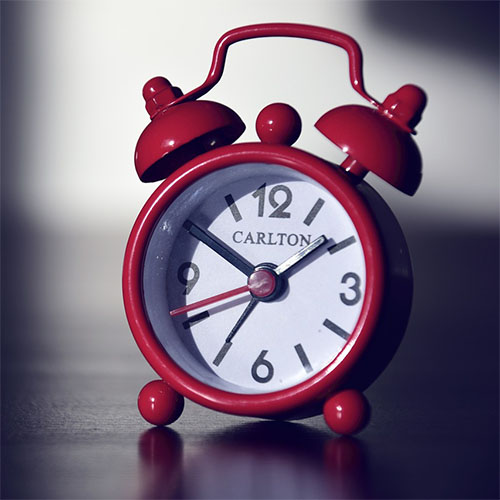Frustration is an under-appreciated emotion. The emotions that typically demand our attention are the power players, like anger, joy, love, sadness, and fear. We tend to give certain “secondary” emotions like happiness, longing, boredom, and shame significant air time as well, especially when it comes to explaining our behaviors and desires.
Those discussions and insights typically revolve around things like us wanting more happiness, joy, and contentment in our lives – or recognizing that we yelled at the kids or stuffed the rest of the leftover cookies in our face because we were bored, sad, angry, or ashamed.
But how often do we stop to think about boring old frustration and its impact on our daily lives and behavior?
What exactly is frustration, anyway?
Among its various definitions, frustration is “a feeling of anger or annoyance caused by being unable to do something” and/or “a deep chronic sense or state of insecurity and dissatisfaction arising from unresolved problems or unfulfilled needs.”
All of which boils down to frustration being that feeling we get when our will is thwarted.
This makes a lot of sense when looking at the research, which shows that infants respond positively – as shown by facial expressions, heart rate, and other physiological measures – to learning a “contingency response” (e.g., the infant’s action produces a desired outcome, such as pulling a string to make a pleasant-sounding noise) and that they respond negatively when the desired outcome stops happening – in other words, when their goal is blocked. Notably, researchers have observed that the physiological signals indicative of frustration appear tied to a stress-related response.
Stress-related responses are thought to be regulated by the vagus nerve – the one that innervates the organs of our chest and abdomen and is considered the major nerve of the parasympathetic nervous system (the one that calms us down). We’ll touch a bit more on this nerve in a moment (no pun intended).
What part does frustration play in our daily lives?
The more I observe of the world, the more I notice that frustration – that often-overlooked emotion – wields a powerful and subversive wallop.
I’ll give you an example. About a decade ago, I was skiing with my boyfriend and a group of his friends, doing one last run before lunch. We were on a narrow, tree-studded, mogul-filled run, and my long, outdated skis weren’t performing well – and neither was I. Everyone had to spend an inordinate (to me) amount of time waiting for me to catch up, which had me feeling more than a little humiliated and incredibly frustrated. After running a contemptuous internal number on myself about how badly I sucked, I ended up about halfway down the slope in one of those fuming, world-hating states of mind that had me stoically telling everyone to go on without me and I would meet them at the lodge. Everyone did, except my boyfriend.
The run finally ended, and he asked what was going on. I started to observe out loud how hopeless I was – not just at skiing, but at everything. Straightforward soul that he was, his comment was along the lines of “Well, I can’t stop you from pulling that trip on yourself, but there’s another way to think about it. That was a hard run, and really frustrating on those skis. If it was me, I’d just chalk it up to experience and not go on that run again.”
Huh.
What a simple solution! He cut right through the mountain of self-hatred I’d been resolutely making out of a minor mole hill.
Why had I gone there? Because I was frustrated.
Frustration vs. anger
I noticed the frustration connection again a few weeks later that same winter when I was trying to get my car up my boyfriend’s steep driveway for a cozy date night rendezvous. This feat could be quite difficult after a snowfall, requiring just the right angle and speed when entering to make sure you had the proper momentum to make it to the top without losing traction. I misjudged once, twice, three times. By the fourth time, I could feel myself spiraling into a fuming, self-loathing misery that could easily have ruined our evening – except for the fact that I noticed it. Once again, my response to frustration – no other stimulus required – was to launch directly into a self-hating spiral. Frustration short-circuited my brain and unleashed my inner critic in full force – no pause; no build up; not a shred of rational thought involved.
Since then I have noticed this same phenomenon repeatedly in other people: coworkers or friends wrestling with a stressful issue that’s not going their way; my husband stuck in a project that’s not going smoothly; my stepson hitting a road bump while doing his homework … the list goes on.
While we hear a lot about anger management in its various forms, we don’t seem to recognize the potency and impact that simply being frustrated can have on our moods, self-talk, and behavior. And if we do consider it, we seem to think of it as more of a low-level irritant that perhaps pre-disposes us to the “real” emotion of anger.
But what if we stop to consider frustration as a trigger emotion in its own right? How often in your own life has frustration launched you directly into self-condemnation or a complete downward-spiraling mood shift?
How it all ties together
If we agree that we could all benefit from developing a higher level of self-awareness around this emotion and its impact on our mood and behavior, then the first step is to recognize when we’re feeling frustrated. How do we do this?
Start by paying attention to what’s happening in and with your body, mind, and emotions in situations where your patience is dwindling. Assess whether outside influences are impacting your situation: Have you had enough sleep? Are you hungry or thirsty? Are you physically or mentally drained? Is your physical environment uncomfortable? Do you have a lot on your plate so your stress baseline is already higher than ideal?
Now start to notice your specific patterns of emotional and behavioral response to frustration. What messages do you start playing in your head? What does your tone of voice sound like? How do your movements and behaviors change? What happens to your ability to think rationally?
The power of mindfulness
One of the most powerful tools for working with frustration is mindfulness. In fact, the Buddhist concept that suffering has its roots in attachment seems to directly parallel what we know about frustration: that it is the feeling that comes to us when our will is thwarted – i.e., when we are blocked from an outcome to which we are attached in some way (just like those infants in the study, remember?).
In fact, going back to those studies of infants’ physiological responses to frustration brings us to professor of psychiatry Stephen Porges, Ph.D., who runs the University of Chicago’s Brain-Body Center and has developed what is called “polyvagal theory.” This theory is based on newer research into the vagus nerve, which we touched on earlier.
Scientists now know that the vagus nerve has two different branches – one that is more primal, and another that regulates our “fight or flight” behaviors based on social influences. This second, “smarter” branch of the vagus nerve allows human beings to regulate our emotions based on social needs. It also ties directly into the facial nerve that regulates expression and the middle ear muscles we use when listening – a relationship that researchers have found works both ways.
What this means you can do with frustration
One implication of this research according to Dr. Porges is that “the process of using the muscles in our face and head to modulate our social engagement will actively change our physiological state by increasing vagal influences on the heart and actively blunt the sympathetic-adrenal system [the “fight or flight” response that occurs when we are under stress]. Then we can be more in contact with reality, more alert and engaged.”
In other words, one way of resisting our stressed-out “fight or flight” response is to make a conscious effort to actively listen and pay attention to what’s actually going on around us, staying attuned and socially engaged to help calm ourselves.
In doing this, many people find that mindfulness can be a powerful tool and, with practice, can bring us to a place of being “where and as we actually are in this very moment, whether the experience is pleasant, unpleasant, or neutral” (quoted from the Mindful Living Programs web site).
This tolerance builds over time and allows us to more and more often choose to acknowledge and pass through frustration rather than letting it hijack our mood and behavior.
If you’d like to start your own mindfulness practice, a great place to learn more is the UC Berkeley web site Greater Good, which has a wonderful section on Mindfulness. There are also articles and resources available on the Mindful.org web site.
This article is the first in what I’m thinking of as my “Discomfort Series.” Why a Discomfort Series? I’m a big believer in self-awareness, and taking a mindfulness approach toward life means coming to a place of peace with our full range of human emotions, including the uncomfortable ones. In this series, I plan to take a look at some of the emotions that can give us a hard time when it comes to truly being our whole self. I welcome your feedback and input as I develop this series! Please drop me a line any time.



